The West Highland Way is Scotland’s oldest long distance walking route. It starts in Milngavie, just outside Glasgow, and finished 151km later at the base of Ben Nevis in Fort William. Every year, thousands of people from around the world complete the route. My corkonian companion, Sam, and I spent seven days at the end of May 2016 hiking and camping our way along it.
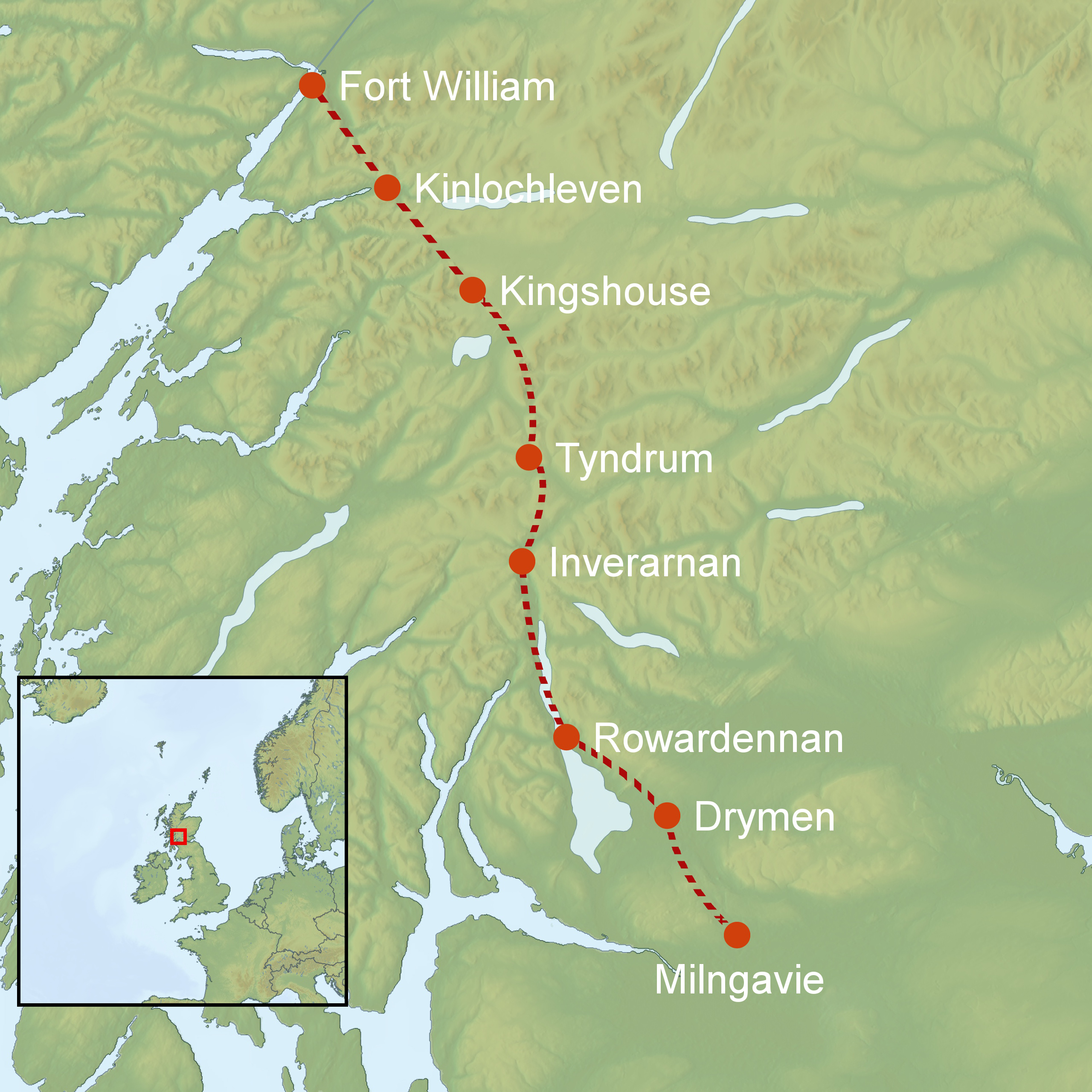
If you go from south to north, the route rises up over Conic Hill at first before descending back down to Loch Lomand. Following the shoreline of the lake you pass Rowardennan and the famous waterfall at Inversnaid. Next, the way brings you to Glen Falloch, then Glen Orchy and then to the famous Glen Coe. After climbing up the ‘Devil’s Staircase’ there is a final descent down to Glen Nevis before ending at the foot of Ben Nevis, Britain’s tallest mountain, in Fort William.
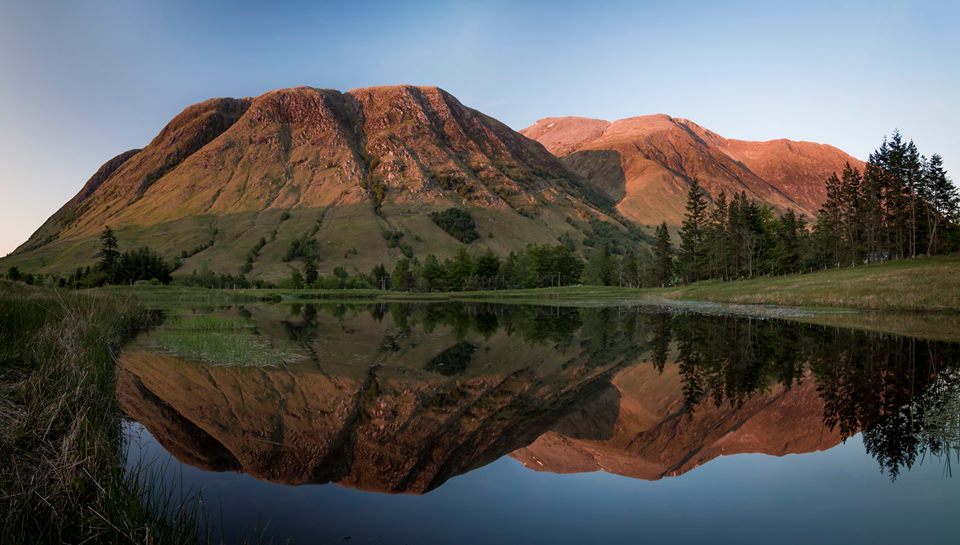
Although the trail is never more than 10km from a small town, parts of the West Highland Way feel pretty isolated. You can complete the west highland way sleeping in luxurious hotels, eating in fancy pubs and even having your bags transported for you. On the other hand, if you’re on a budget, you could camp out each night, carry your belongings on your back and pick up your food in supermarkets. These are two very different experiences; we aimed for something in between the two.
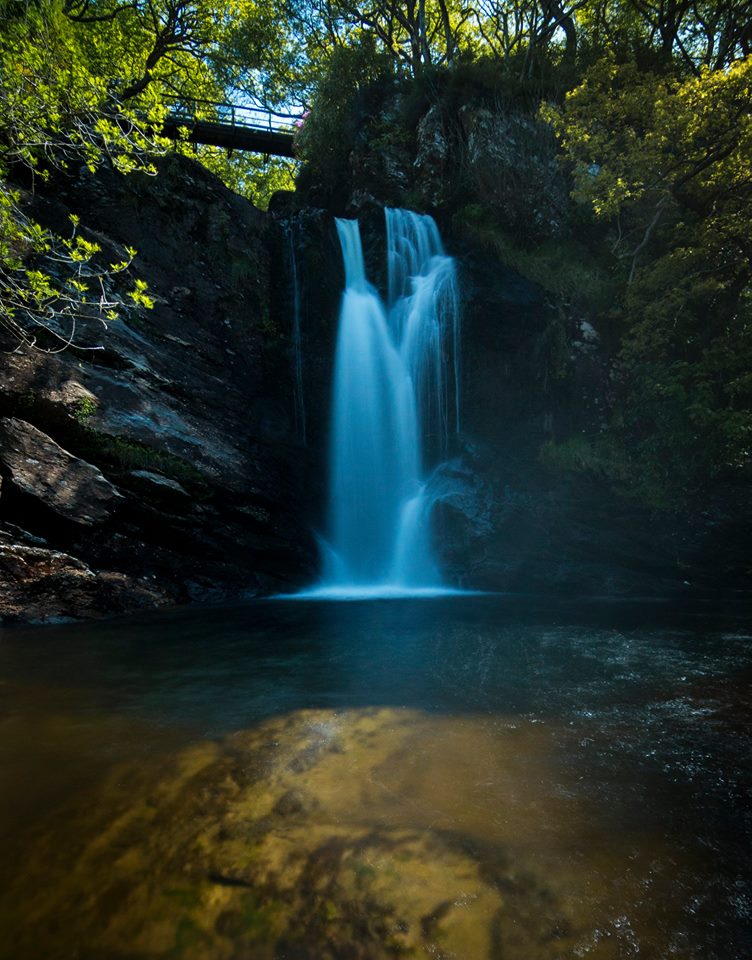
We wanted to camp out as much as we could, partly for the experience and partly for photography. Wild camping makes it much easier to be in beautiful locations for when there is beautiful light (sunrise and sunset). But this was also supposed to be a holiday, so we decided that we wouldn’t say no to the odd pub meal for refueling.
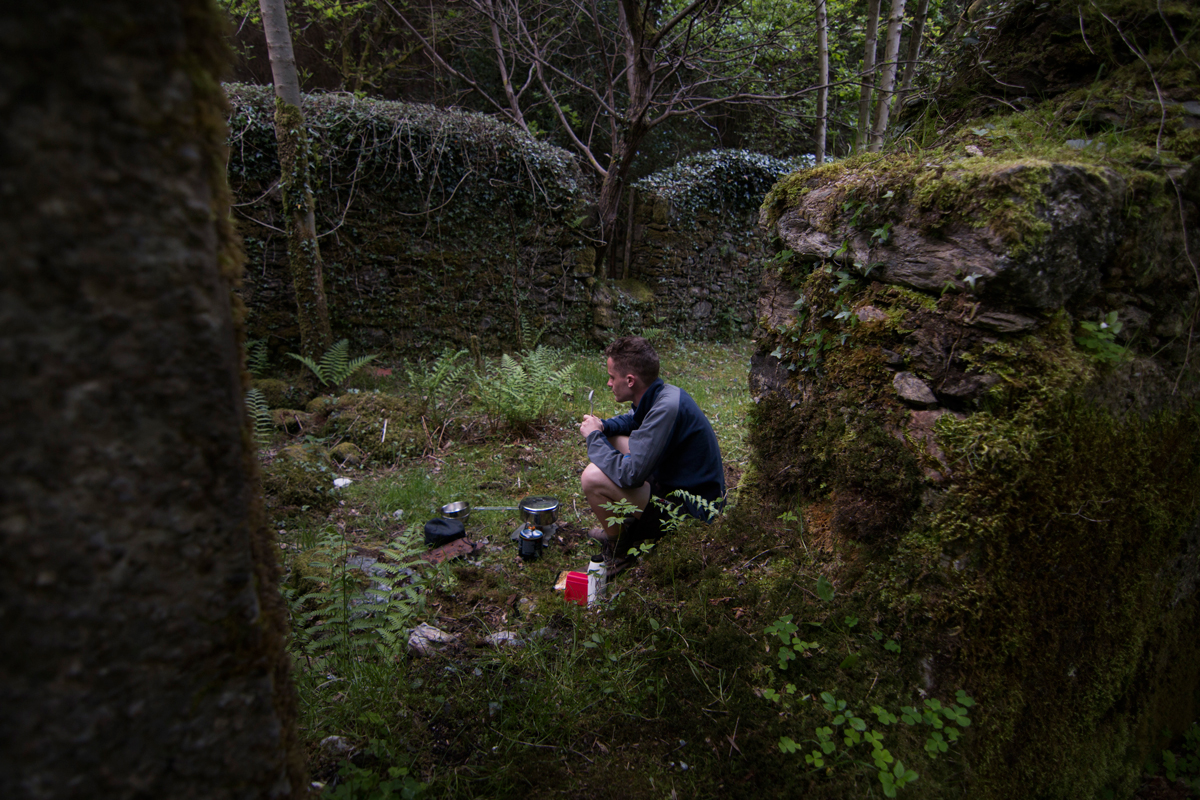
We had packed our ponchos expecting wet Scottish weather but some sort of miracle happened. Over the entire week it only rained for a couple of hours and when it did, we were safely in our tent or in a warm pub.
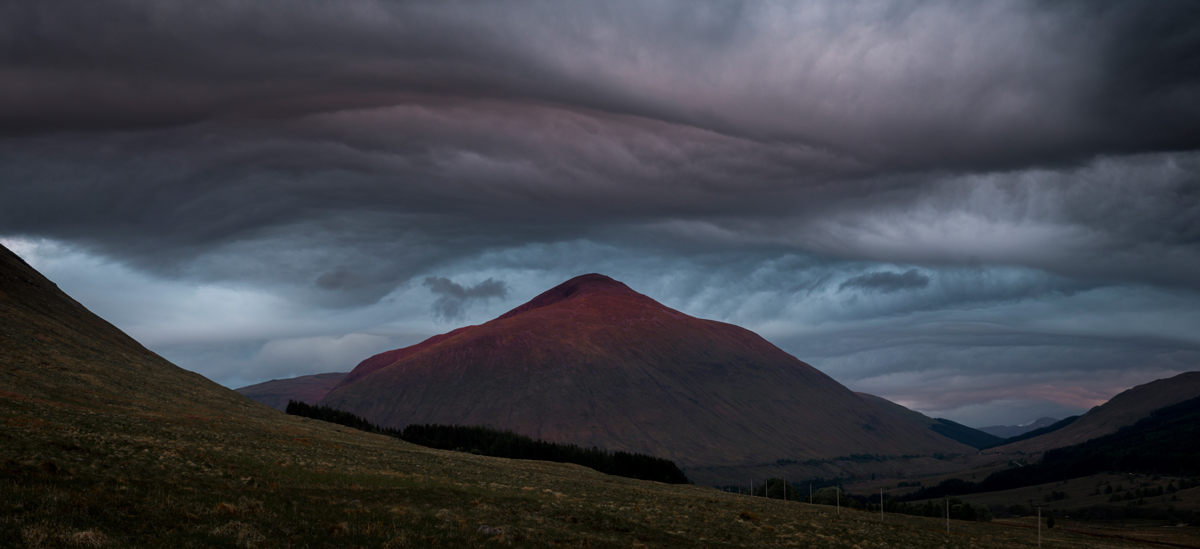
We spent one night in a classic Scottish Bothy. The murine resident of this Bothy was a bit rude to be honest. He stole some of our chocolate and gave Sam a bit of a scare. That little rat was the first of the wildlife that we saw on our trip.
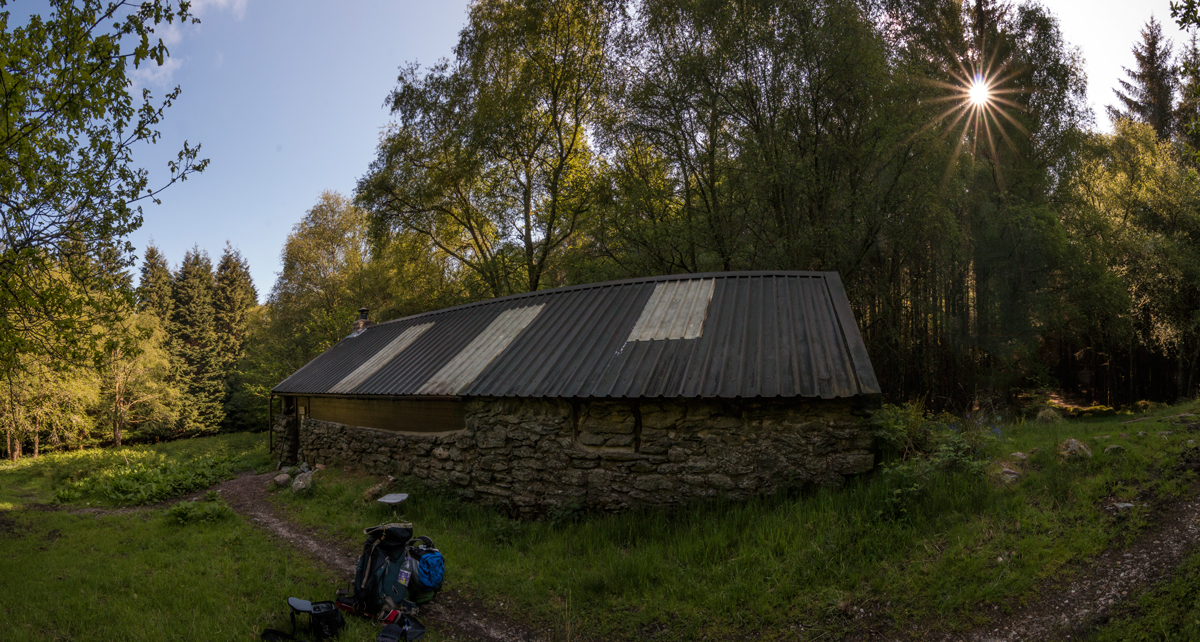
The Natives
The wildlife in Scotland is pretty similar to what I’m used to in Ireland although when you spend a week outdoors you appreciate and see a lot more.
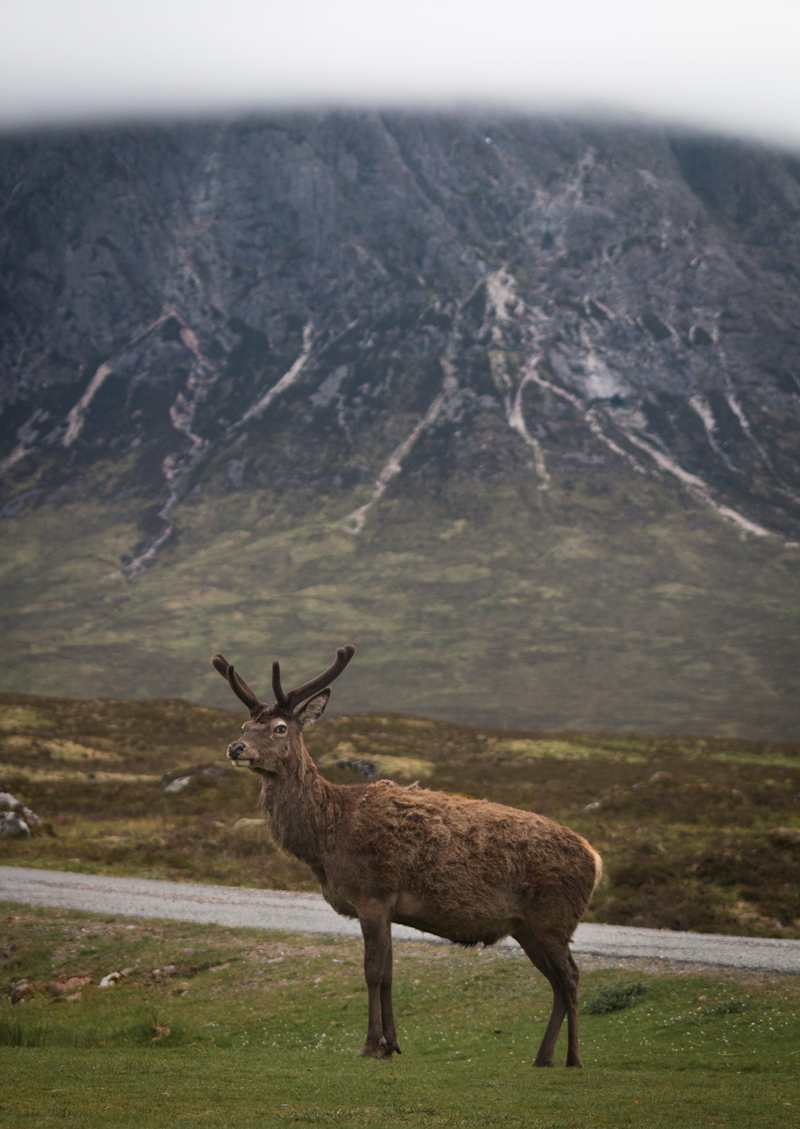
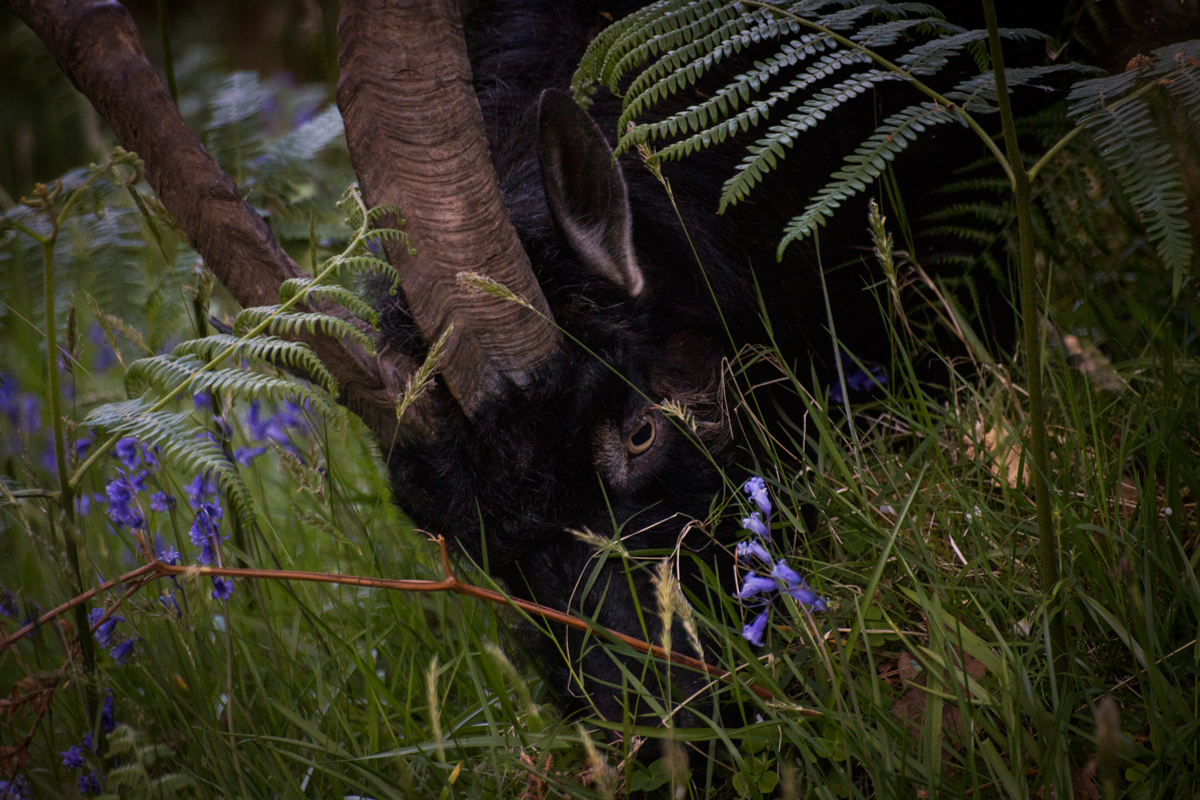
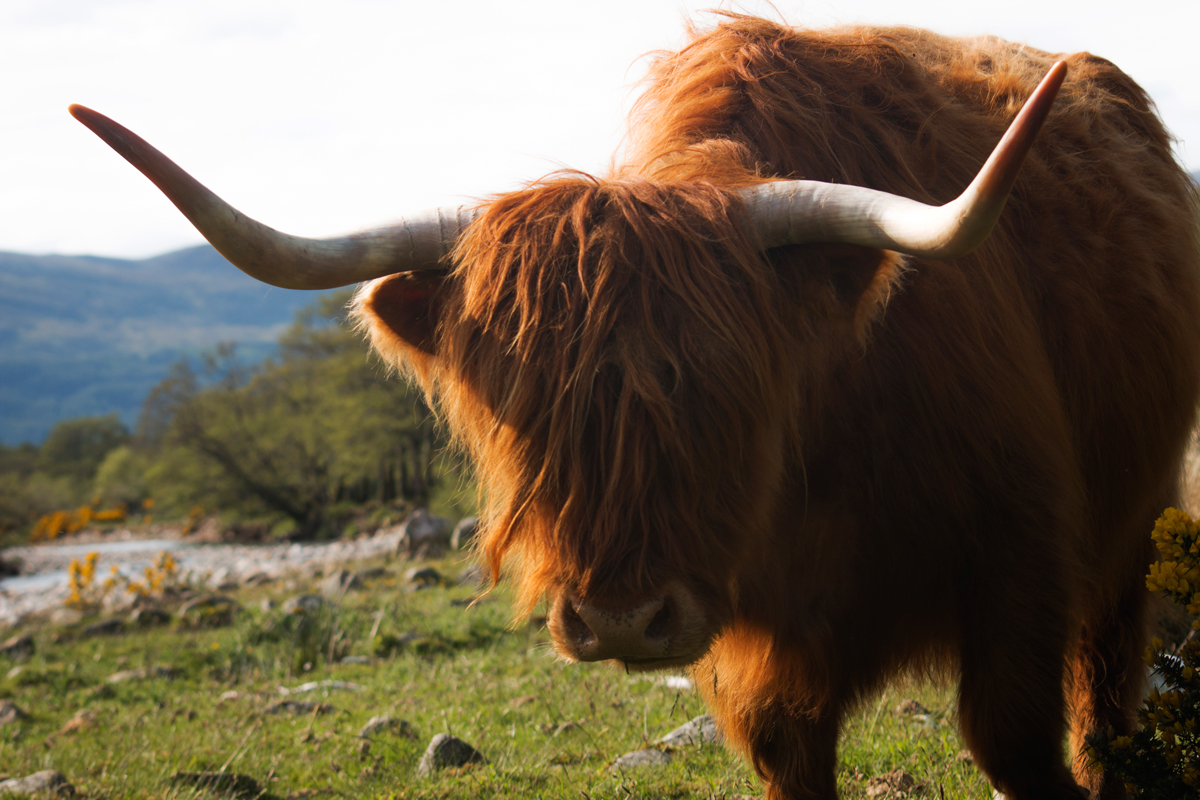
The forests along the shores of Loch Lomand were full of bird song. Willow warblers are one of the few birds that I can identify by their song, which will remind me of the trip from now on since we heard it so many times. One of the most memorable moments of the week was one night when we were lying in the tent in the Glen of Orchy when we heard what sounded like a UFO whizzing over our heads. The noise went on and on for about an hour before I realized what it was. It was the drumming of a snipe (video).
They don’t make the sound vocally, instead it comes from the wind rushing through a modified tail feather, which they hold out from their body, as they dive towards the ground. They only make this noise during the breeding season and apparently only on moonlit nights.
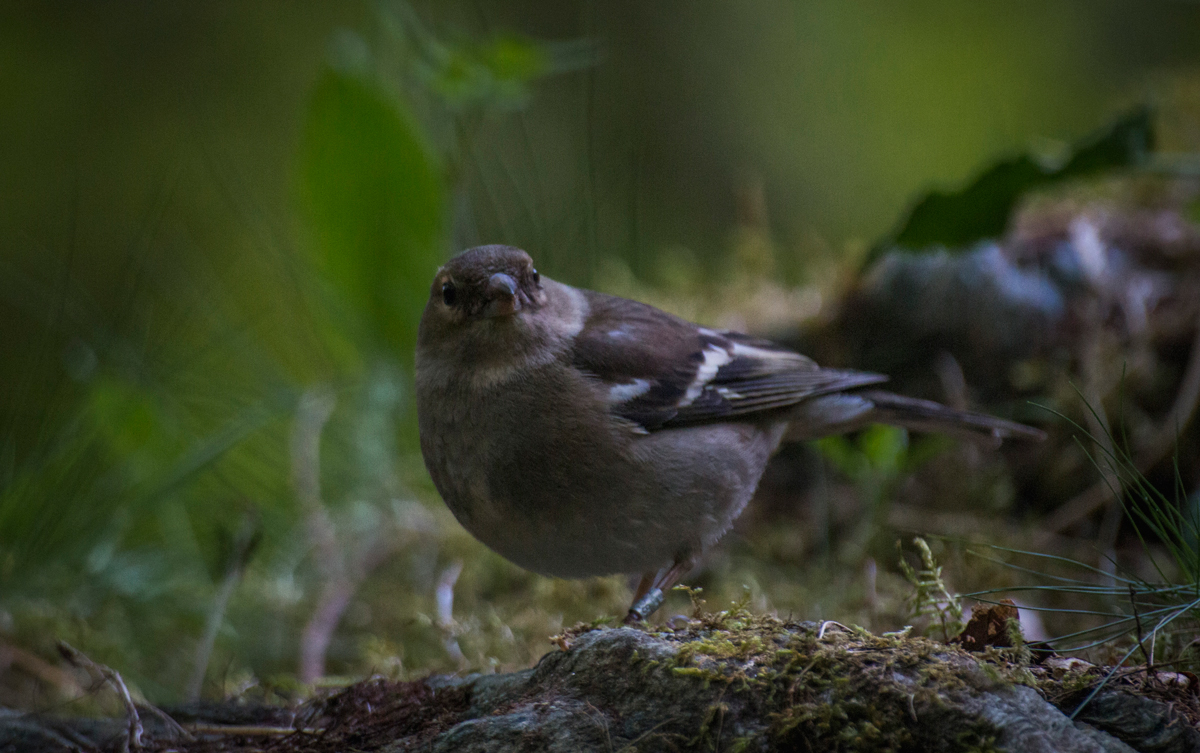
Ben Nevis
We decided to climb Ben Nevis on our last day. It was pretty straightforward. It rises continuously from sea level up to about 1,350m making it the tallest mountain in Britain and Ireland.
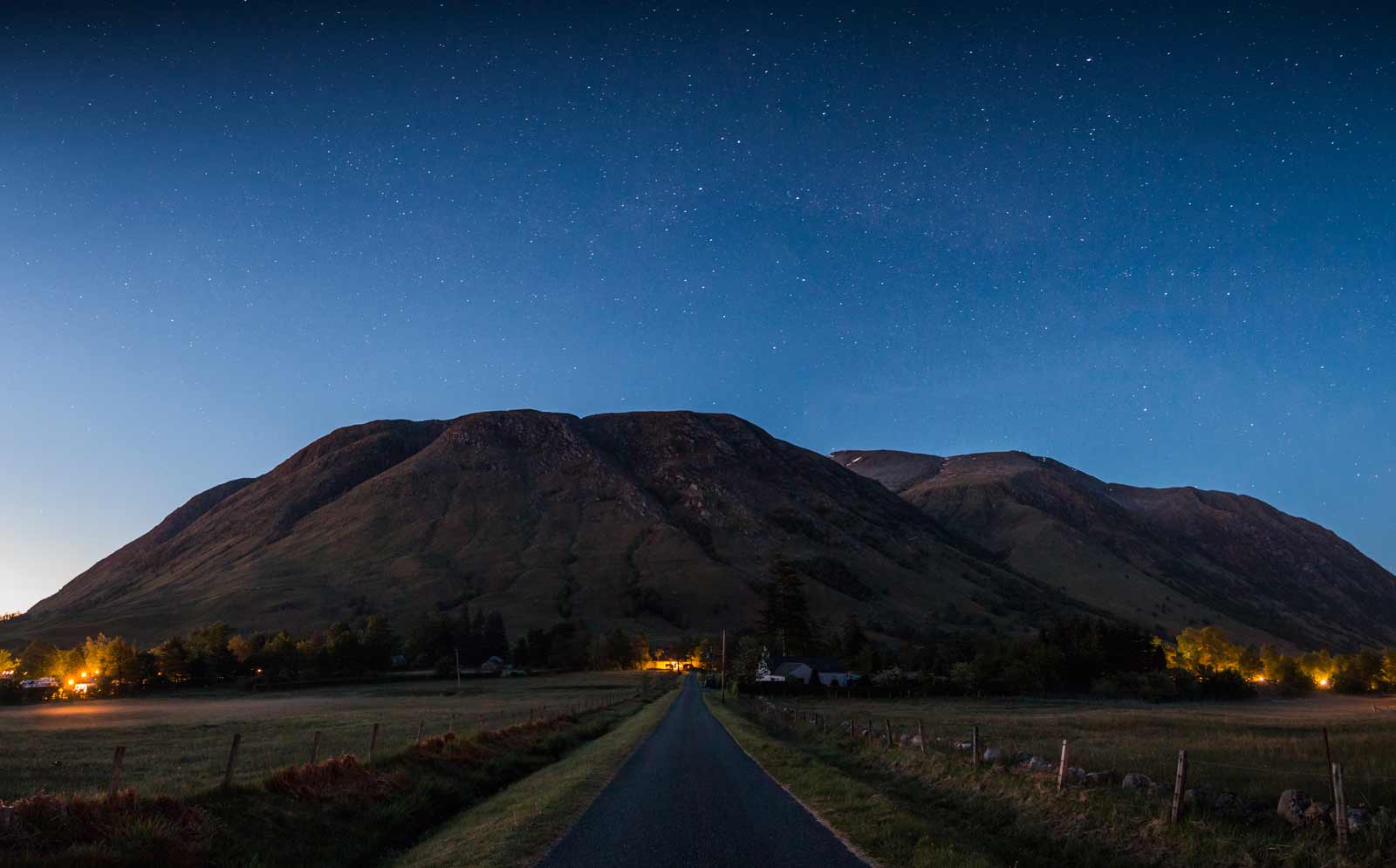
The last 20 minutes of the climb was in pretty thick snow, which was cool because it was practically summer. We were lucky enough to have blue skies for the climb and for about thirty minutes when we were on the summit.
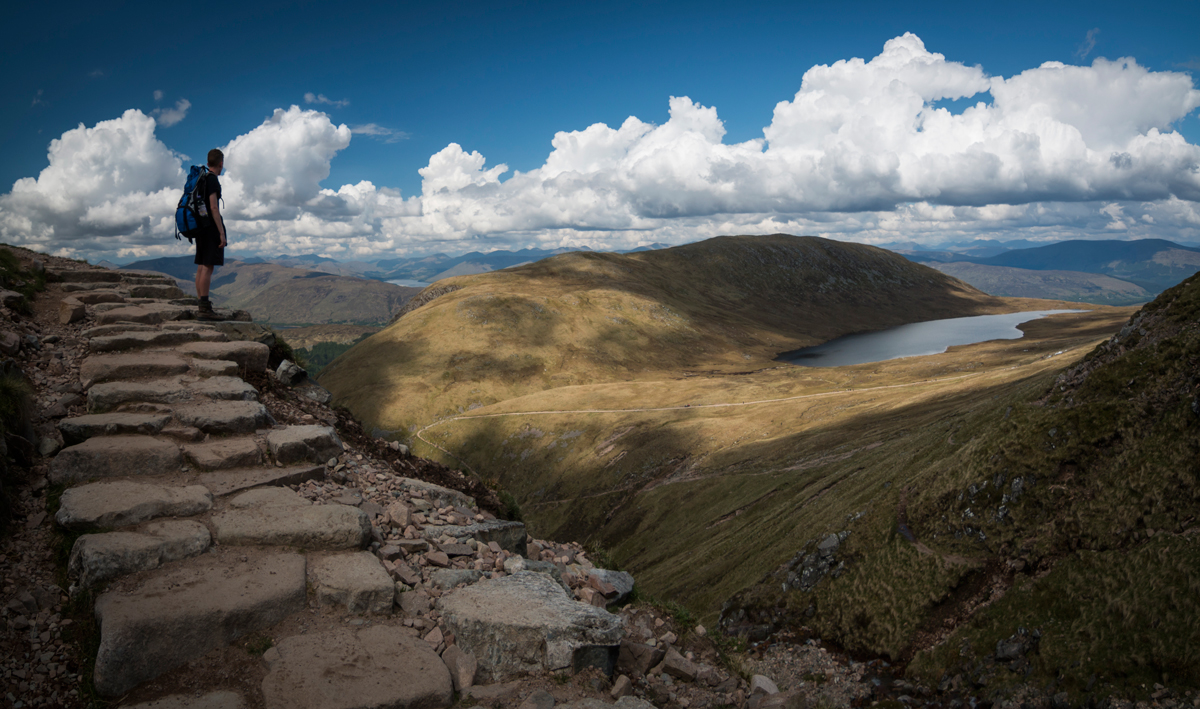
Soon, some large storm clouds rolled in which gave a pretty spectacular atmosphere to some of my favourite images from the week. During the week, we kept saying to each other how lucky we had been with the weather, the people we had met, the food, the wildlife, the walking – everything had gone perfectly. Even now, when it looked as if torrential rain was about to wash us off the mountain we were in luck. No rain came, instead it just lightly snowed. Standing there in the falling snow and looking back across the mountains we had spent the last week enjoying, was the perfect way to end the trip.
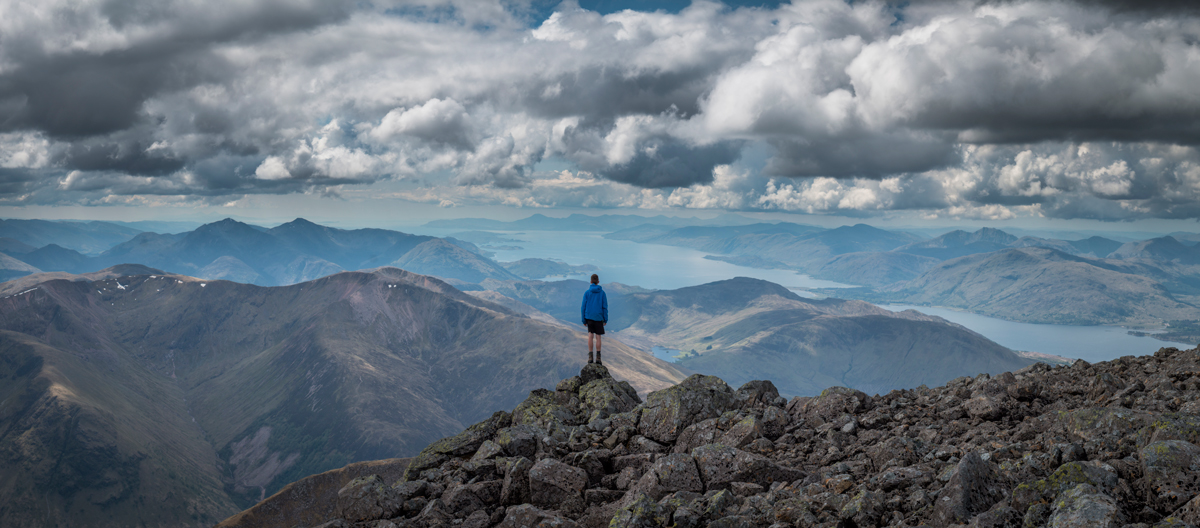
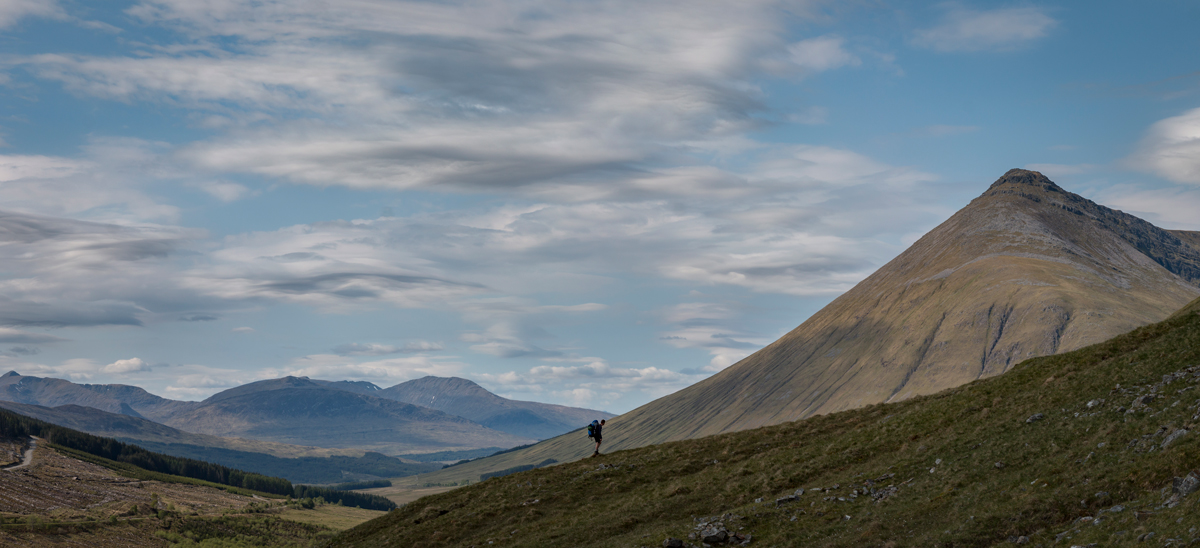
So Nice reading your story.
Heading for hiking in Scotland for first time September this year.
Great stuff. Planning to hike the WHW in march to get some snow capped peaks shots and bleak scenery. If you had a tripod and camping gear etc what kind of weight had you? Would 3rd week in March be too early and cold for camping? Like you it will be a holiday cum photography trek. I’d do it over 8 days so as not to rush and allow for photo stops. I’m sure the camping gives more flexibility as to where you can stay for sunset and sunrise shots.
Hi Conor – yep we were carrying about 15kg each made up of: camera gear (including tripod), tent, mats, cooking equipment, sleeping bags and our clothes. We stayed in one or two campsites along the way but most of the time we were wild camping to be in the most spectacular locations for the best light. It was a great trip despite having pretty sore bodies afterwards with such heavy packs. I’m not too sure what the conditions would be like in March, I imagine pretty variable. There would always be the option to stay in small BnBs or in bothies if the weather turned bad. Enjoy your trip!